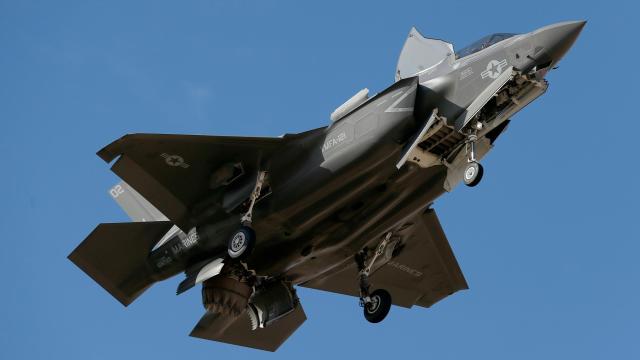The U.S. Air Force announced on Friday that it had successfully used a ground-based surrogate for its laser weapons project, the Self-Protect High-Energy Laser Demonstrator (SHiELD), to shoot down multiple air-launched missiles during a test at White Sands Missile Range in New Mexico.
The system is designed to eventually be mounted on aircraft, where it could serve as a sort of instantaneous point defence system shooting down inbound projectiles. Per the Drive, the laser itself is just one component of the planned final system, with other technologies such as a turreted mount and a pod to attach it to the side of an aircraft constituting separate projects.
“During the series of tests at the High Energy Laser System Test Facility, the Demonstrator Laser Weapon System, acting as a ground-based test surrogate for the SHiELD system, was able to engage and shoot down several air launched missiles in flight,” the Air Force wrote in a statement.
“The demonstration is an important step of the SHiELD system development, by validating laser effectiveness against the target missiles. The final SHiELD system, however, will be much smaller and lighter, as well as ruggedised for an airborne environment.”
The U.S. military has been interested in lasers essentially since they were invented. But one key hindrance has been the miniaturizing the technologies necessary to create a powerful enough beam to destroy anything quickly—and previous failures include a $US5 ($7) billion project involving a Boeing 747 retrofitted to carry a laser that failed in 2012. A photograph released by the Air Force shows the current surrogate being used in testing is really, really big.
As the Drive noted, it’s unclear under what circumstances the Air Force conducted this latest test, such as whether operators were given advance information on when and where the missiles would be launched, and at what range and under what conditions the surrogate laser managed to take them down. It’s also unclear what types of missiles were involved. Documents previously released by the government suggest that the Air Force is currently doing Phase I low power ground tests, which would put the final product years away but is a precursor to flight testing.
While the system is designed for use on fighter jets, the U.S. military has plans to mount it on larger craft, the Drive wrote:
The Air Force eventually wants SHiELD to be able to shoot down incoming air-to-air missiles, as well as surface-to-air missiles, providing an active defence for fighter jets during operations in high-risk environments. The service has already suggested, not surprisingly, that the system could also find its way onto larger, slower-moving combat and combat support aircraft, such as bombers, tankers, and transport planes, to mitigate the threat from ever-improving missiles cued by steadily more advanced radars and other sensors.
… It’s hard to stress just how revolutionary a podded laser defence system would be for virtually any military aircraft. Unlike expendable countermeasures such as hot-burning flares or radar-blinding chaff, or electronic warfare systems, a laser weapon actively zeroes in on an incoming missile rather than simply throwing out some form of distracting noise to try to confuse the threat. A directed energy weapon also has an effectively bottomless magazine.
However, limitations could include inclement weather and the inability for the system to target more than one incoming projectile at a time.
The Air Force has some competition. The U.S. Army has tested an Apache AH-64 attack helicopter-mounted laser system, potentially offering new capabilities like destroying equipment and disabling light vehicles without the use of high explosives. They’ve also used lasers mounted on Humvee trucks to detonate improvised explosive devices from a distance.
The Navy has also been developing its own systems to be mounted on warships, where they could potentially take on threats like missiles or small boats.
